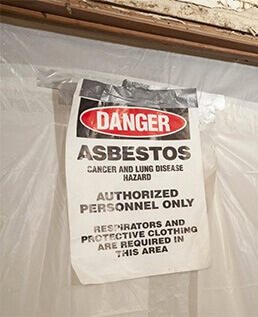What Does Winter Mean for Residential Mold Growth?
Posted in Mold Removal, on November 04, 2021
Homeowners usually seek out professional mold removal in Toronto during the spring and summer months when they begin working on home improvements and renovations that uncover problematic outbreaks. This can result in the misleading belief that the winter months around the Toronto area are more or less mold free, which is untrue. Many species of mold, especially black mold in Toronto can be prevalent during the long winter months, often going unchecked until it begins to warm up outside.
Here's what you need to know about mold growth during the winter and how to prevent it from happening.
Identifying Mold
 Although heat and humidity play a key role in mold growth, it's still possible to find black mold in Toronto in the middle of winter. While not all black mold is toxic, there are still severe health implications of mold exposure such as wheezing, coughing, shortness of breath, and even migraines and memory loss. To effectively determine the species of mold and what type you might be exposed to, it's imperative to get a professional mold test and inspection.
Although heat and humidity play a key role in mold growth, it's still possible to find black mold in Toronto in the middle of winter. While not all black mold is toxic, there are still severe health implications of mold exposure such as wheezing, coughing, shortness of breath, and even migraines and memory loss. To effectively determine the species of mold and what type you might be exposed to, it's imperative to get a professional mold test and inspection.
At Canada's Restoration Services, we offer free mold inspections, where we determine all sources of mold growth in your home and the species, and we will continue with advanced and comprehensive mold removal in Toronto as soon as possible.
Attic Ventilation in the Winter
To keep mold growth at bay in your attic, ample ventilation is vital. Proper ventilation manages to keep temperatures even and maintains airflow, which plays a significant role in preventing the exponential spread of mold. There are many ways to tell if your attic has mold; a distinct and musty odour being the obvious one. If your attic is humid and the air is stagnant, the risk of mold is through the roof (literally!).Your best option is to contact Canada's Restoration Services for mold removal in Toronto.
Leaks, Ice Damming, and Mold
Ice dams happen when a shelf of ice forms on the edge of your roof, preventing rainwater and melting snow from properly draining off your roof. Excess water on your roof and heat from your home can result in leaks and water seeping into your attic. Snow melting into attics, mixed with a stagnant, low-light environment, creates the perfect conditions for mold infestations. When mold infestations occur in your attic, it can be difficult to detect until it’s a full-blown attic without a professional mold inspection.
Warmth and Humidity
Although heating your home in the winter can typically cause the air to become dry, there are still numerous factors that can make your home susceptible to mold growth during those chilly winter months. For instance, poor ventilation, especially in bathrooms after steaming hot showers, and general condensation can be significant factors in mold growth throughout your home. Having windows constantly closed — which is understandable — creates minimal airflow and excess moisture, welcoming mold growth.
Where Mold is Commonly Found in the Winter
During the winter, mold is usually found in attics where it gets hot , but it's not limited to that. Anywhere with low ventilation and excess humidity can fall victim to mold infestations, such as bathrooms, closets, and even kitchens.
Regardless of where you find mold in your home, contact our 24/7 customer service at Canada's Restoration Services for mold inspections and removal services. Our certified and trusted professionals are here to keep you and your home healthy.







